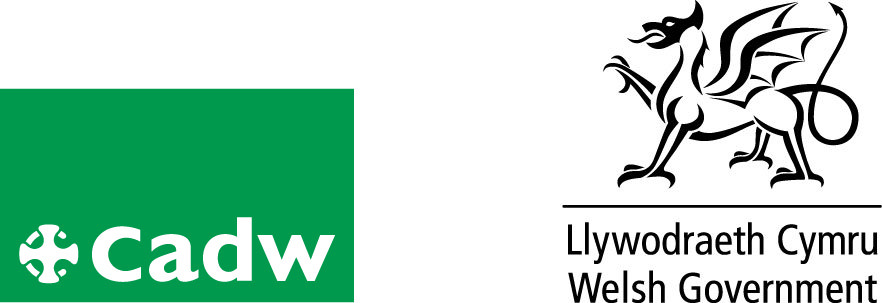The Popish Plot
by Aiden Reynolds
Attitudes to Catholicism in 17th century
For much of the 17th century Catholics were left to practise their religion with little interference or harassment with occasional outbursts of feelings against Catholics influenced by threats from France and Spain.
The situation changed with the defeat of the royalists in the Civil Wars (including in Monmouthshire the downfall of the Marquis of Worcester at Raglan, the Catholics’ most powerful protector). Charles II’s accession in 1660 helped a little in that he did not want to persecute anyone, only enjoy himself. Parliament, however, still dominated by those of puritan leanings, were determined not to allow any of those they saw as Catholic traitors to succeed.
The situation changed with the defeat of the royalists in the Civil Wars (including in Monmouthshire the downfall of the Marquis of Worcester at Raglan, the Catholics’ most powerful protector). Charles II’s accession in 1660 helped a little in that he did not want to persecute anyone, only enjoy himself. Parliament, however, still dominated by those of puritan leanings, were determined not to allow any of those they saw as Catholic traitors to succeed.
Louis XIV on the throne of France had territorial ambitions which aroused English nationalism and fears. The Great Fire of London was rumoured to have been caused by Catholics, while the conversion to the Catholic faith of the James, Duke of York, heir to the throne, increased anti-Catholic feelings.
The beginnings of the plot
Titus Oates, the instigator of the “plot” found ears ready to accept his revelations. He had been an Anglican curate, a naval chaplain, and at one time a member of the Duke of Norfolk’s household. He then converted to Catholicism, studied at the English College in Rome and later at the Jesuit school at St Omer. He was expelled from both.
Oates was assisted by Dr Ezerel Tonge, Rector of St Michael’s, Wood Street, London in compiling details of leading Catholics and their movements. Using their research, they fabricated a lurid plot in which the king would be murdered, stabbed by Irish ruffians, and poisoned by the queen’s physician. The Duke of York would become king and rule under the influence of Jesuits.
Through a court employee they managed to make the king aware of all this. Charles II, used to such rumours, hardly believed the threat but referred it to his Treasurer. Probably nothing more would have come of it had it not been for the murder of a London magistrate. Oates and Tonge had sworn an affidavit before Sir Edmund Godfrey whose murdered body was found in a ditch on Primrose Hill. A post-mortem showed that the dead man had been strangled, then run through with his own sword. This was thought, erroneously, to confirm Oates’ story and numerous other accusations against Catholics, however ill-founded, spread abroad.
Oates was assisted by Dr Ezerel Tonge, Rector of St Michael’s, Wood Street, London in compiling details of leading Catholics and their movements. Using their research, they fabricated a lurid plot in which the king would be murdered, stabbed by Irish ruffians, and poisoned by the queen’s physician. The Duke of York would become king and rule under the influence of Jesuits.
Through a court employee they managed to make the king aware of all this. Charles II, used to such rumours, hardly believed the threat but referred it to his Treasurer. Probably nothing more would have come of it had it not been for the murder of a London magistrate. Oates and Tonge had sworn an affidavit before Sir Edmund Godfrey whose murdered body was found in a ditch on Primrose Hill. A post-mortem showed that the dead man had been strangled, then run through with his own sword. This was thought, erroneously, to confirm Oates’ story and numerous other accusations against Catholics, however ill-founded, spread abroad.
The vast sum of £500 was offered as a reward for the discovery of Godfrey’s murder. William Bedloe, originally from Chepstow, made up a story that Godfrey had been murdered by three Jesuits and two laymen. The Commons ordered these men to be hunted down; lists of Catholics throughout the country were to be made and those refusing to take the Oaths of Allegiance and Supremacy were to be imprisoned.
Strongly supported by the Earl of Shaftesbury, an influential and bitter enemy of Catholics, the story of the plot became widely accepted. Of particular relevance to the Gunter story, John Arnold MP of Llanfihangel Crucorney had already earlier in the year presented the Commons with a detailed account of Catholic practices in Monmouthshire and Herefordshire.
Strongly supported by the Earl of Shaftesbury, an influential and bitter enemy of Catholics, the story of the plot became widely accepted. Of particular relevance to the Gunter story, John Arnold MP of Llanfihangel Crucorney had already earlier in the year presented the Commons with a detailed account of Catholic practices in Monmouthshire and Herefordshire.
The plot thickens
Oates and Bedloe now set about embellishing the “plot”
in more detail. All the Welsh bishops and the Bishop of Hereford were to be replaced by Catholics;
a Dominican at Bangor, a Jesuit at Hereford, two secular priests at St Asaph’s and St David’s, and by Father David Lewis at Llandaff. A soldier called Winter was to be a leading officer in a large Catholic army which would join forces with Spanish troops landing at Milford Haven.
The existence of The Cwm at Llanrothal, a house where many Jesuit priests had lived and studied for over fifty years, was well known locally and from Arnold’s account to the London authorities. Bishop Croft of Hereford had once studied for the Catholic priesthood but had then converted. Thus, he was an apostate and as part of the plot he was to be murdered. It is therefore hardly surprising that when instructed to bring an end to The Cwm, he responded with alacrity.
At that time there were seven or eight residents with Father David Lewis as their Superior. He had little time to order their evacuation. The priests fled to friendly houses, several even to the surrounding woods abandoning their library and liturgical items, just before Bishop Croft with the magistrates Arnold and Price and armed guards, raided the house.
The existence of The Cwm at Llanrothal, a house where many Jesuit priests had lived and studied for over fifty years, was well known locally and from Arnold’s account to the London authorities. Bishop Croft of Hereford had once studied for the Catholic priesthood but had then converted. Thus, he was an apostate and as part of the plot he was to be murdered. It is therefore hardly surprising that when instructed to bring an end to The Cwm, he responded with alacrity.
At that time there were seven or eight residents with Father David Lewis as their Superior. He had little time to order their evacuation. The priests fled to friendly houses, several even to the surrounding woods abandoning their library and liturgical items, just before Bishop Croft with the magistrates Arnold and Price and armed guards, raided the house.
Innocent loss of life
This was just one of the best known episodes resulting from the perceived existence of the plot. There is no doubt it had a devastating effect on Catholic practice throughout the country particularly in the Welsh marches. It is thought about thirty five innocent men lost their lives directly or indirectly through it and the shortage of priests meant that recusant numbers never recovered.
Oates’ chequered career continued to his death. He was convicted for perjury and imprisoned for life by Judge Jeffreys. William of Orange reversed this and gave him a pension. This was later stopped. In 1698 he joined the Baptists but was expelled for dishonesty. He died in 1705.
Oates’ chequered career continued to his death. He was convicted for perjury and imprisoned for life by Judge Jeffreys. William of Orange reversed this and gave him a pension. This was later stopped. In 1698 he joined the Baptists but was expelled for dishonesty. He died in 1705.







